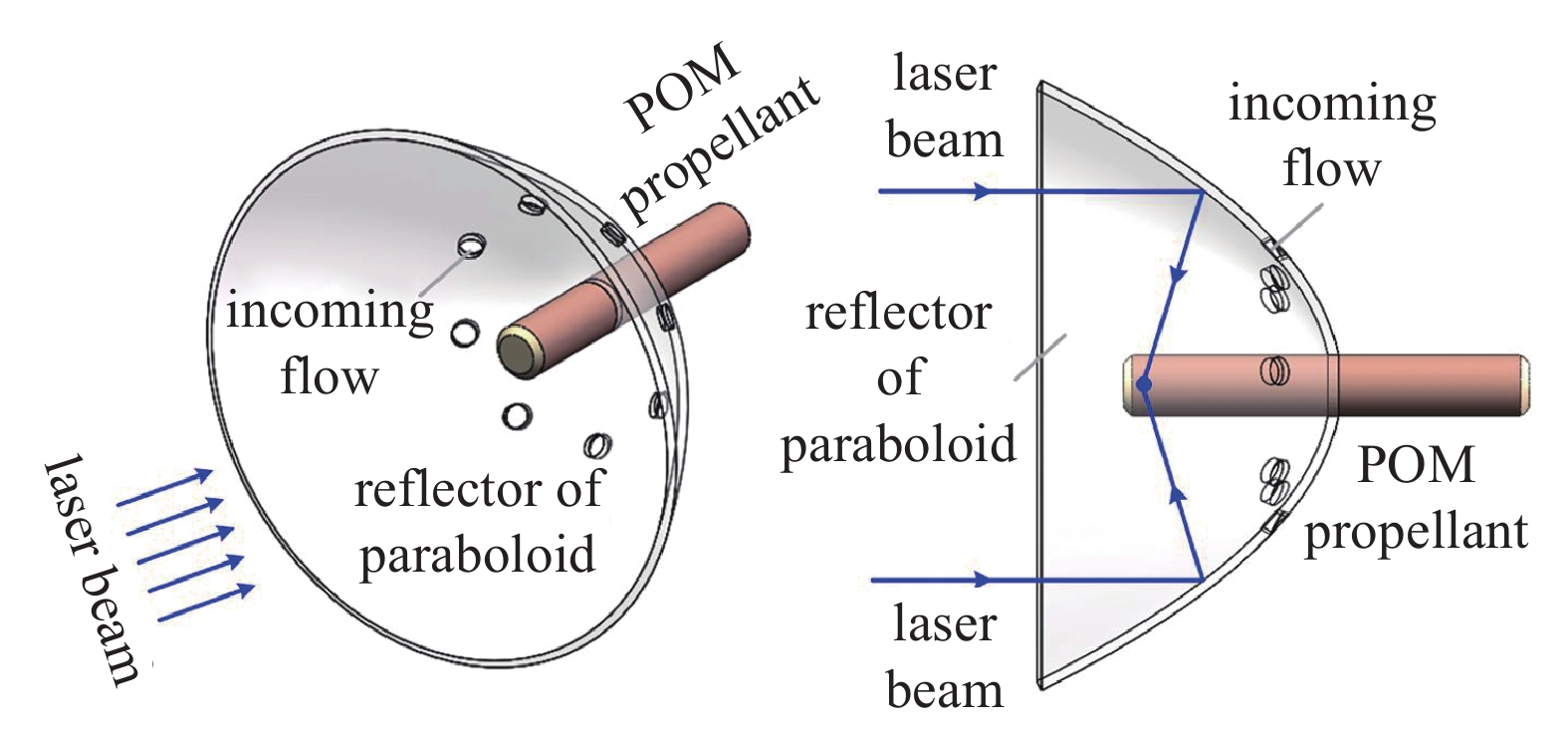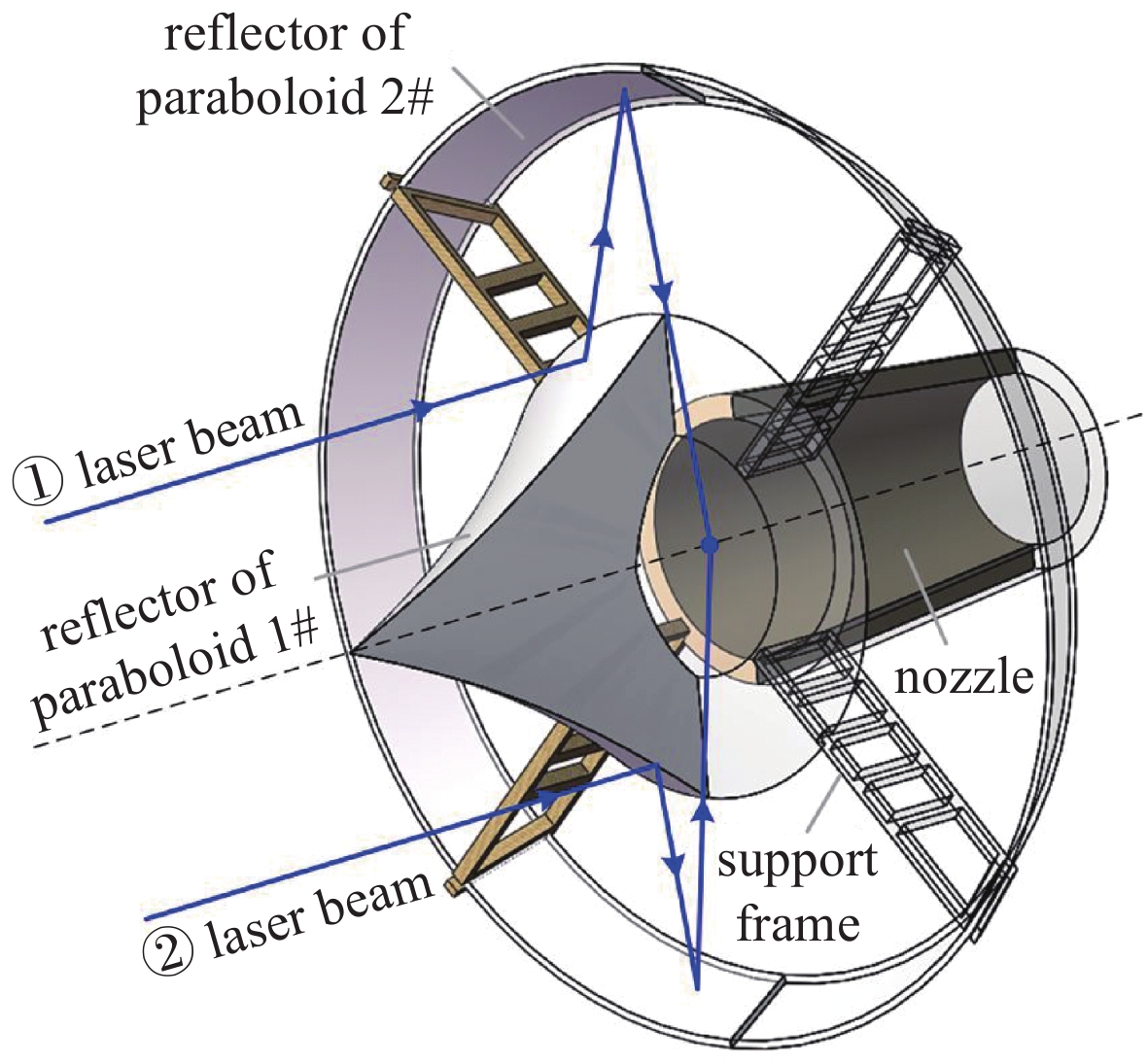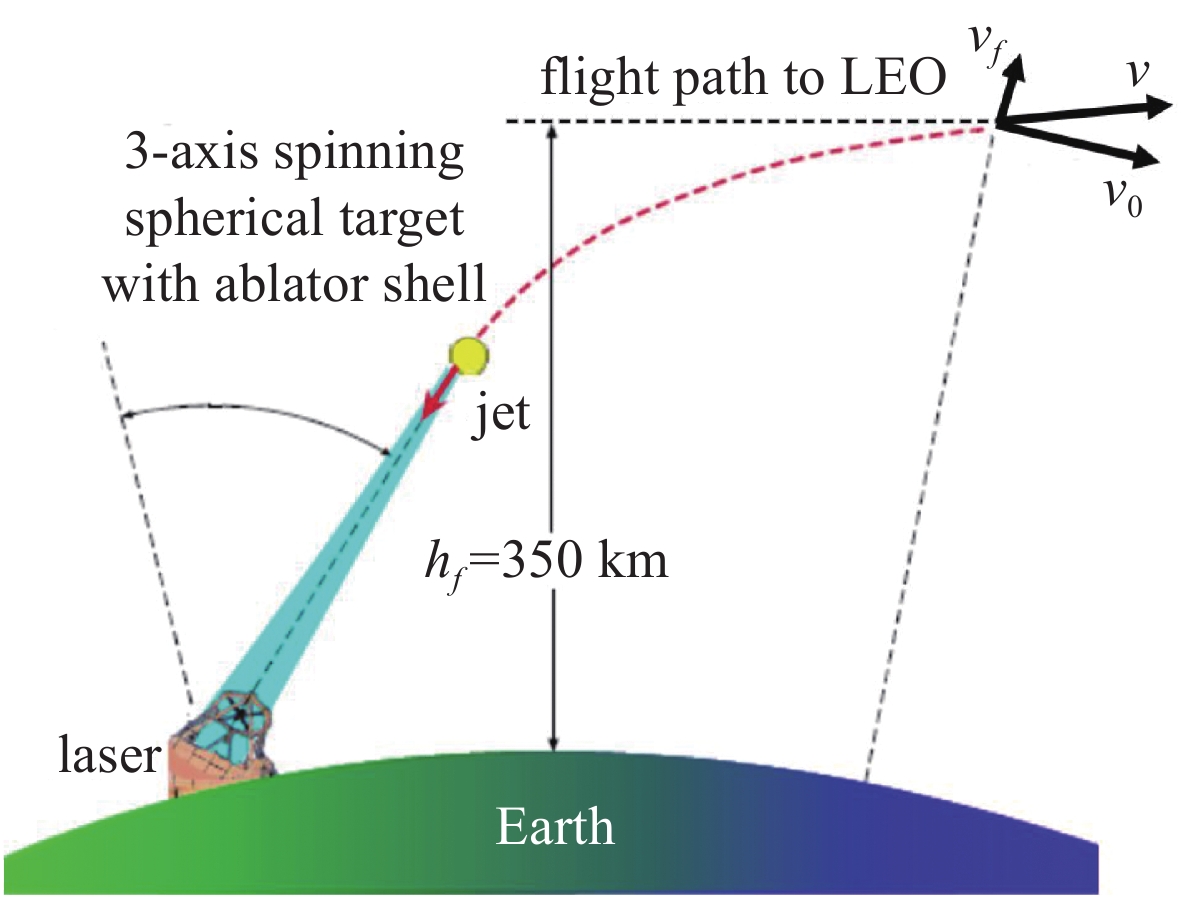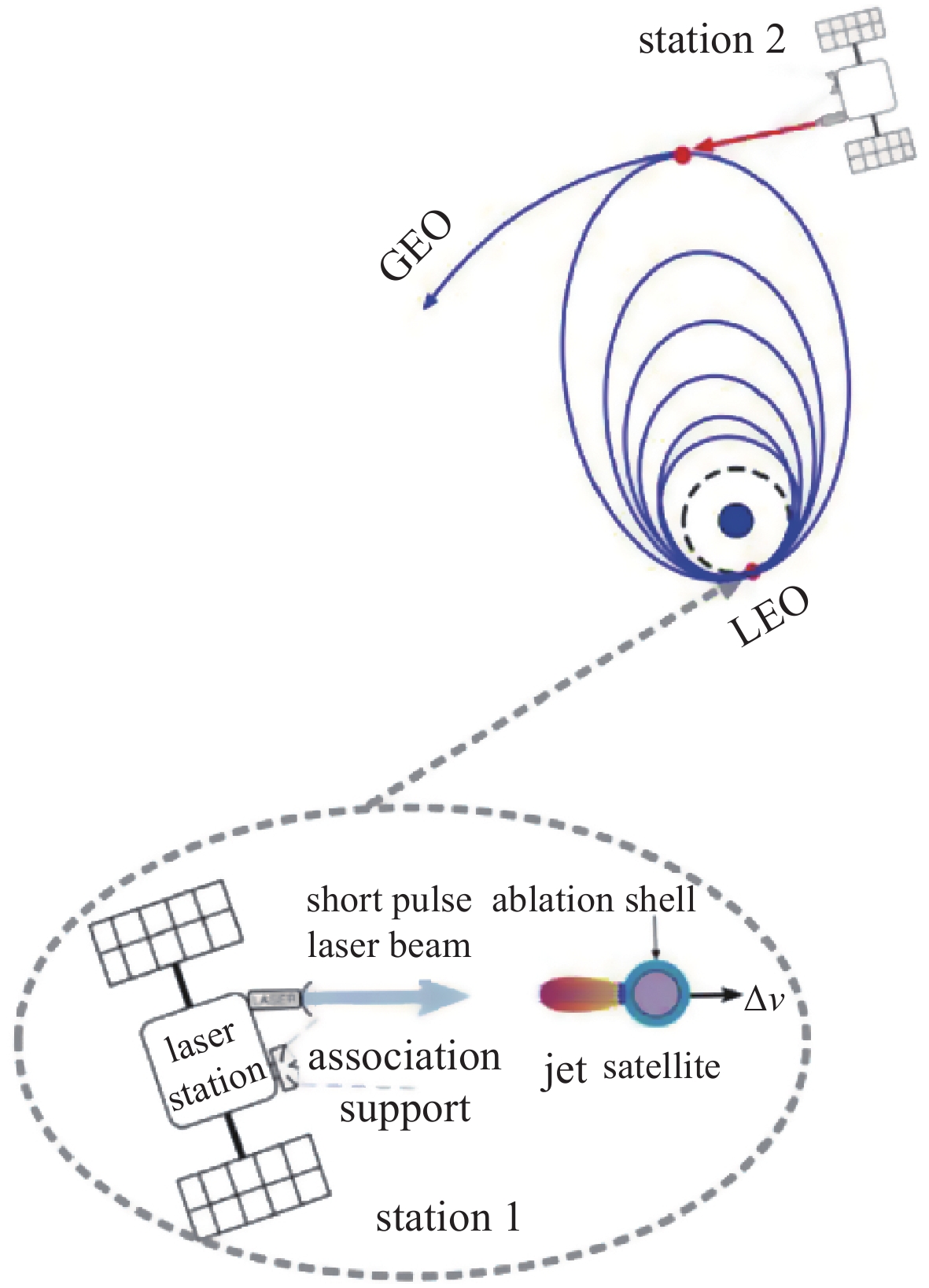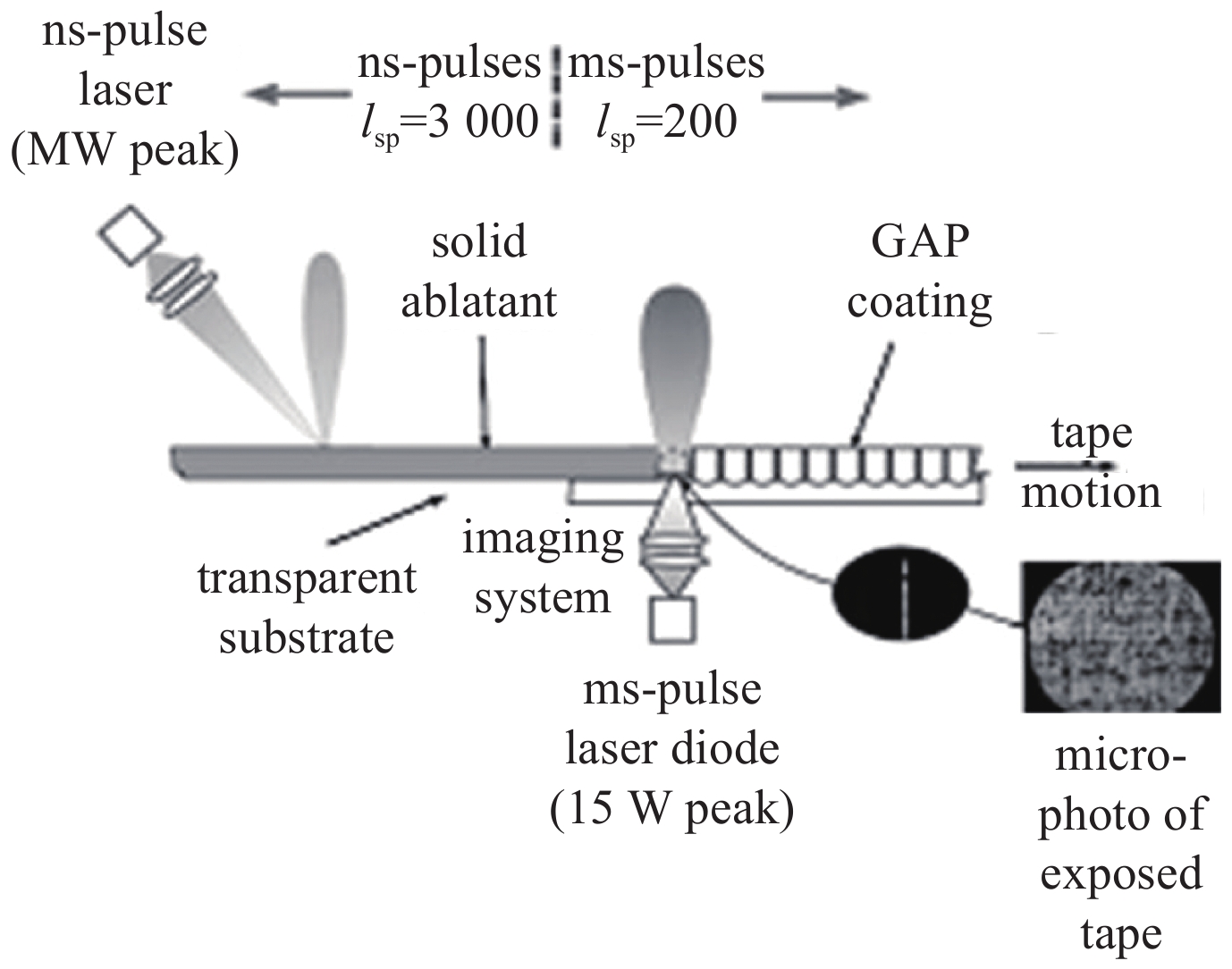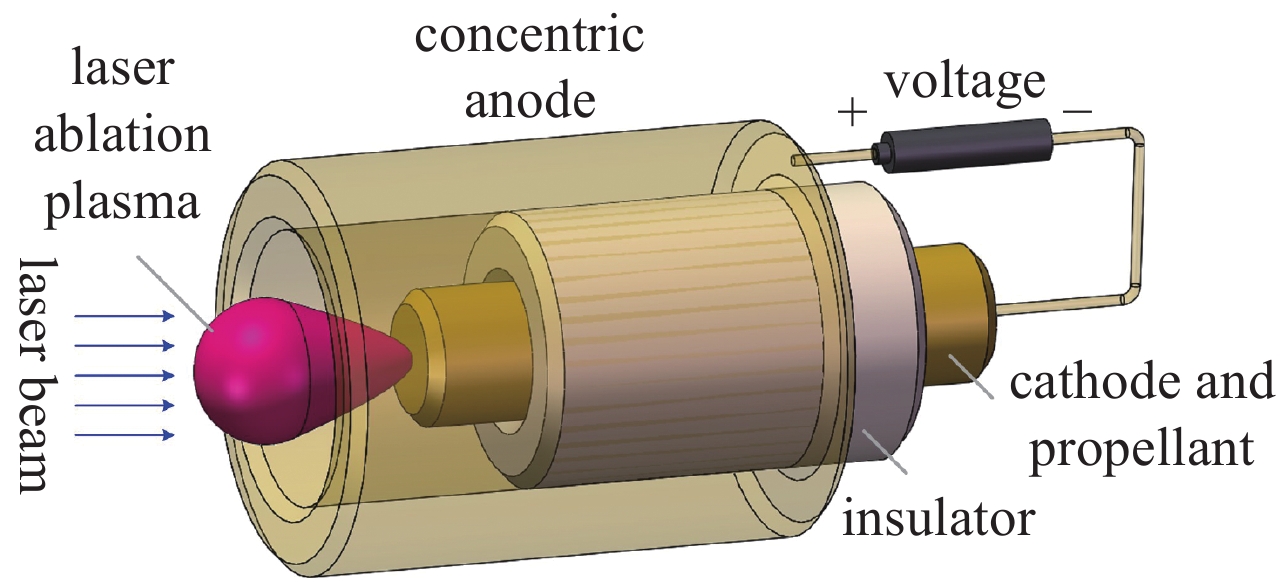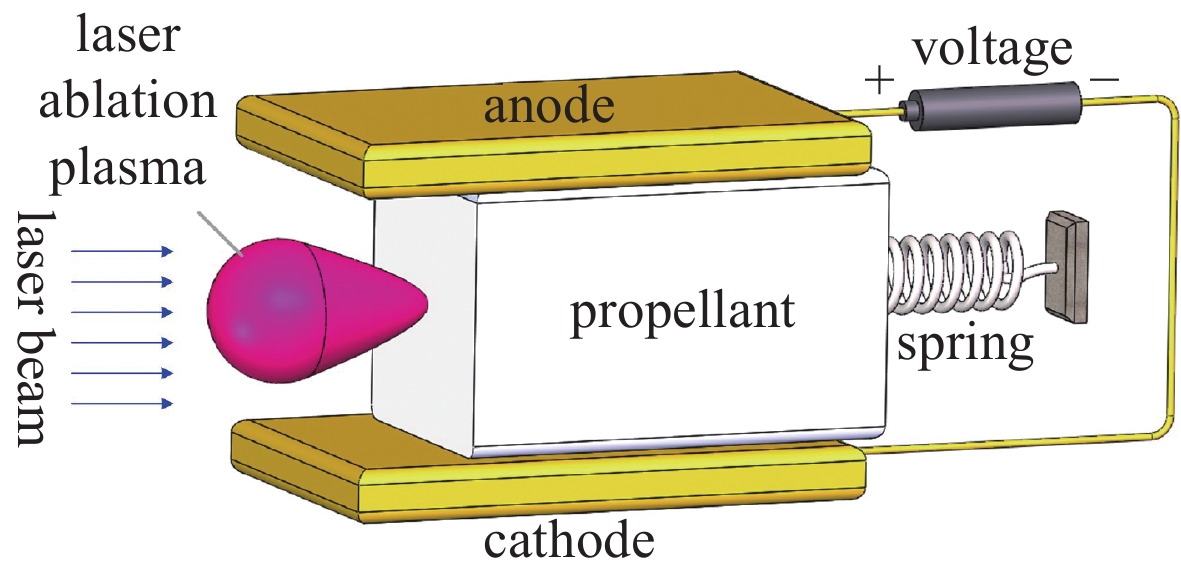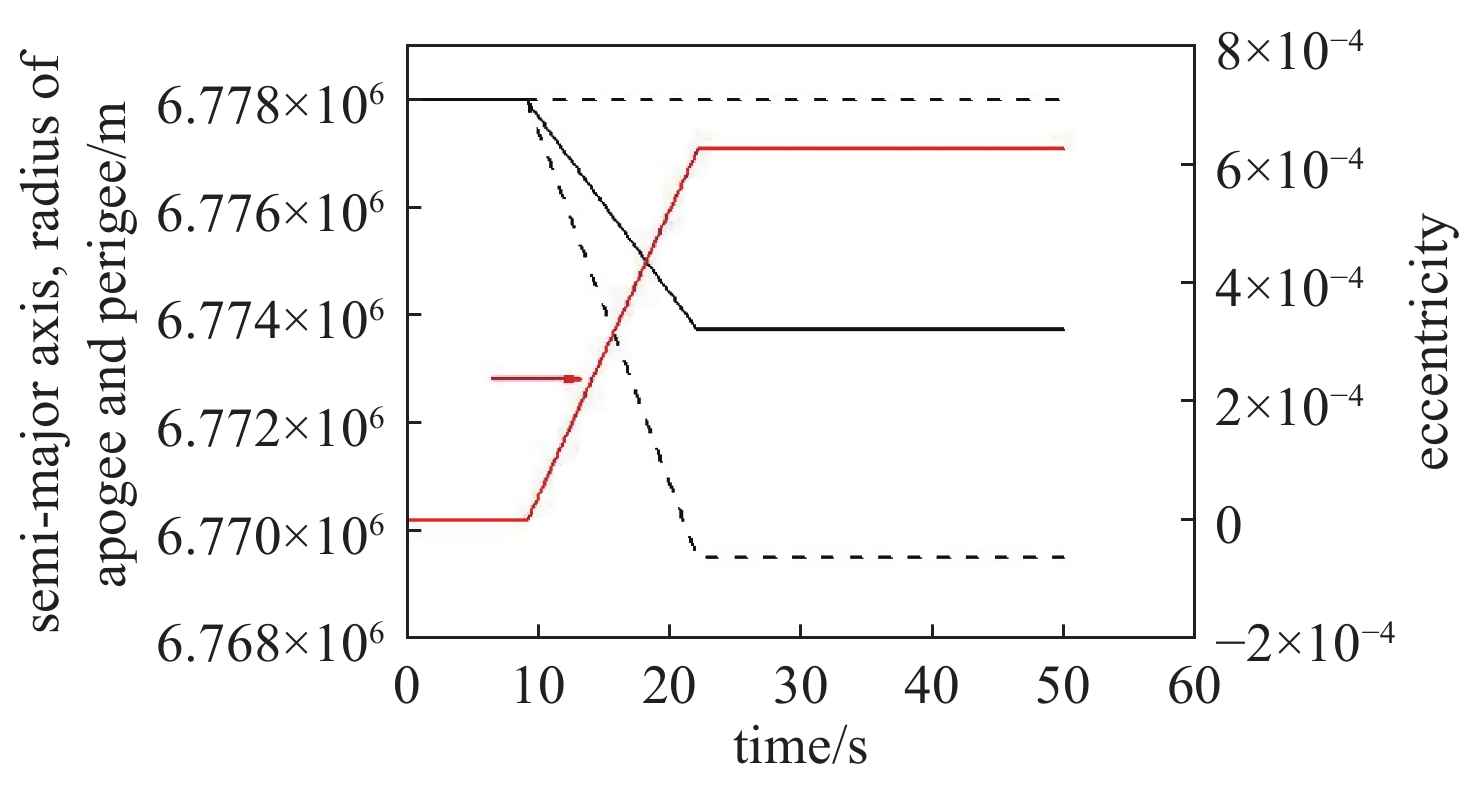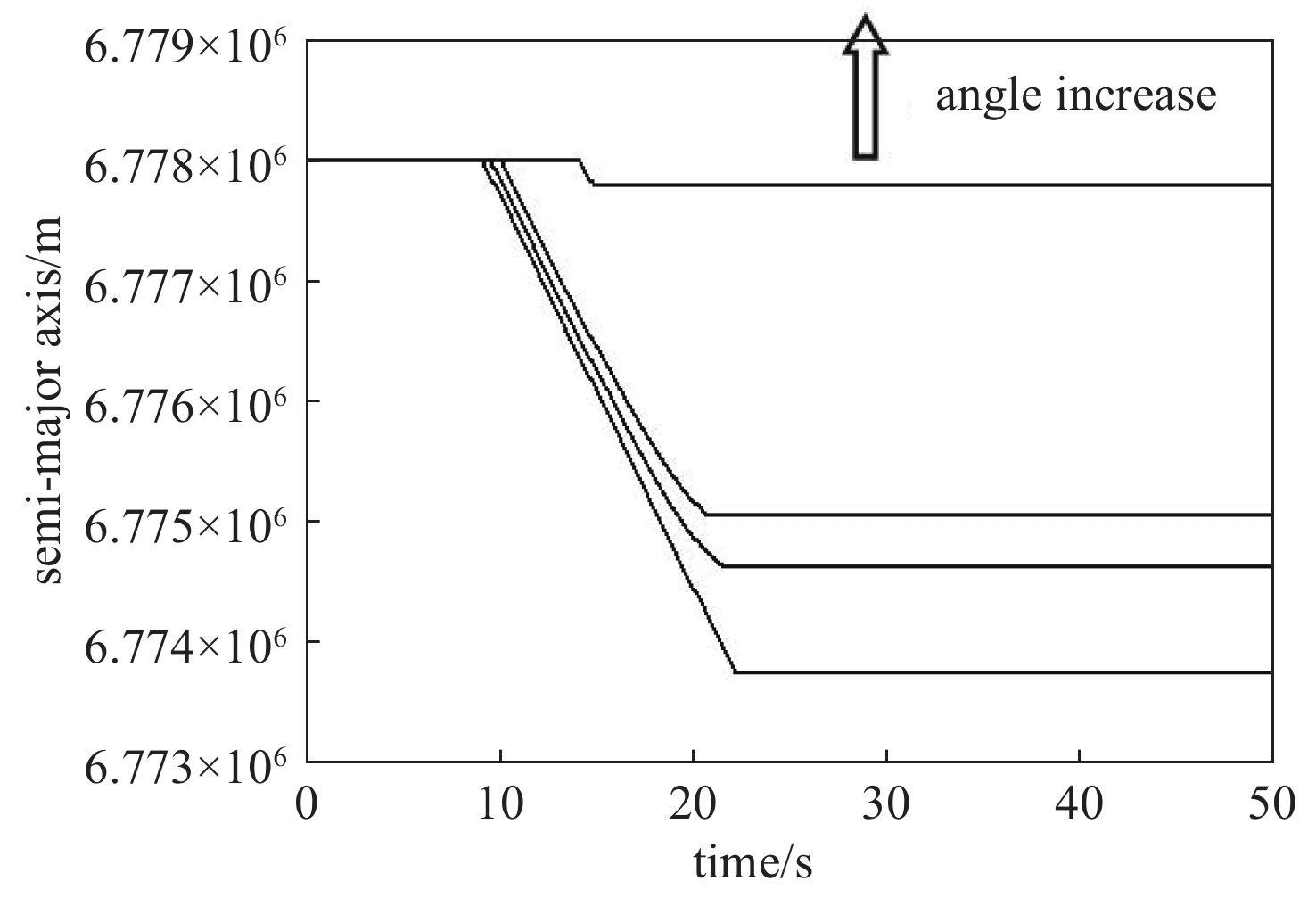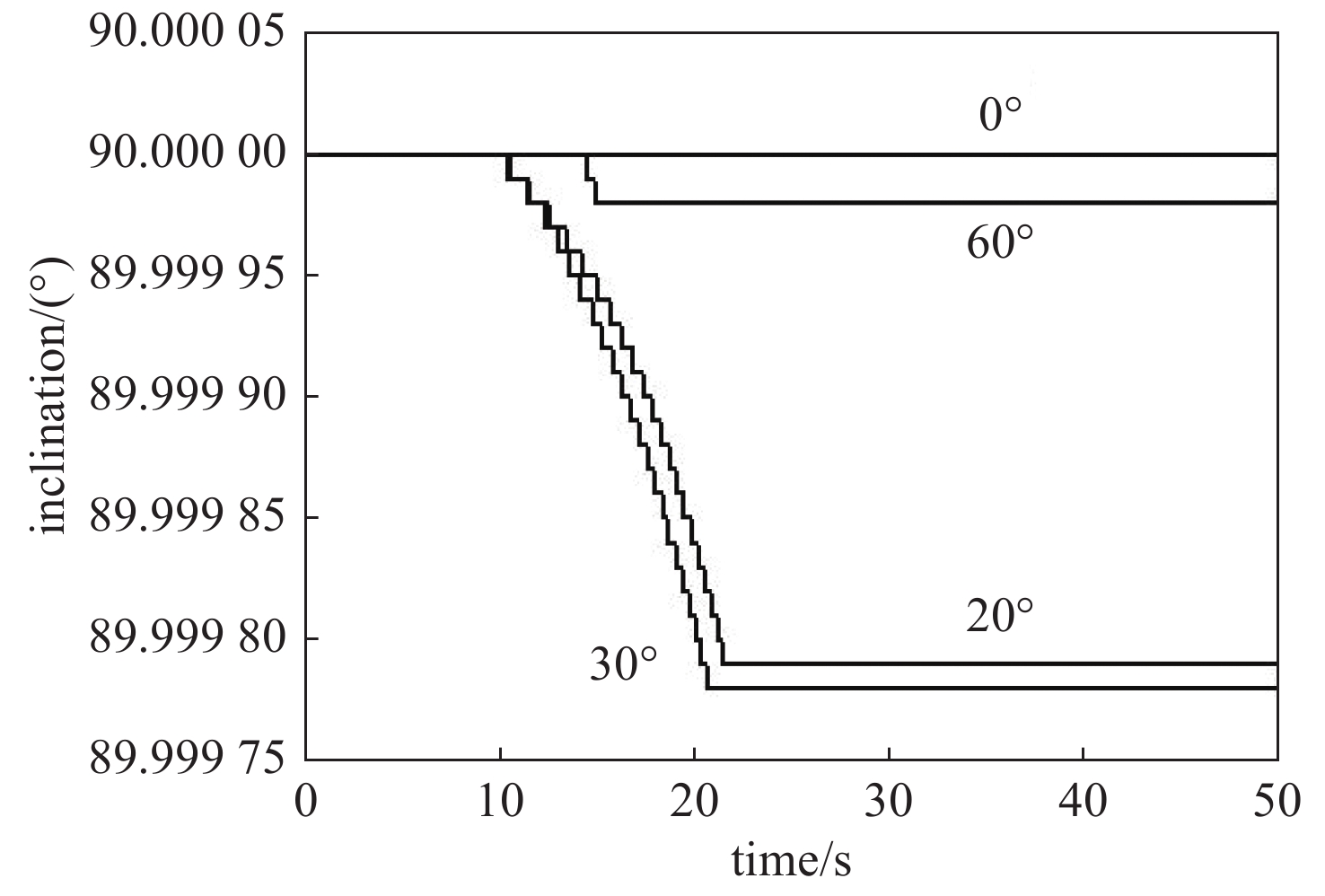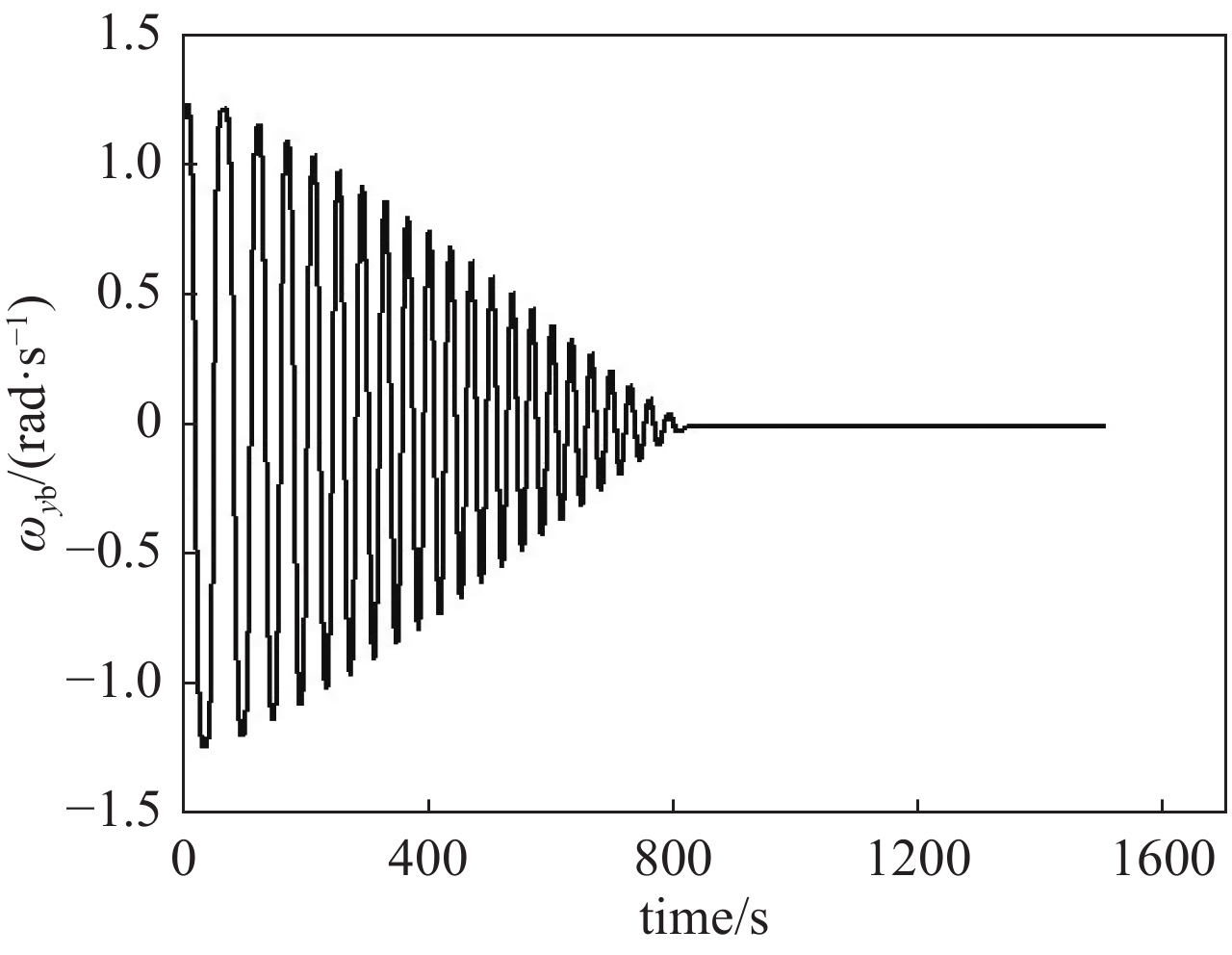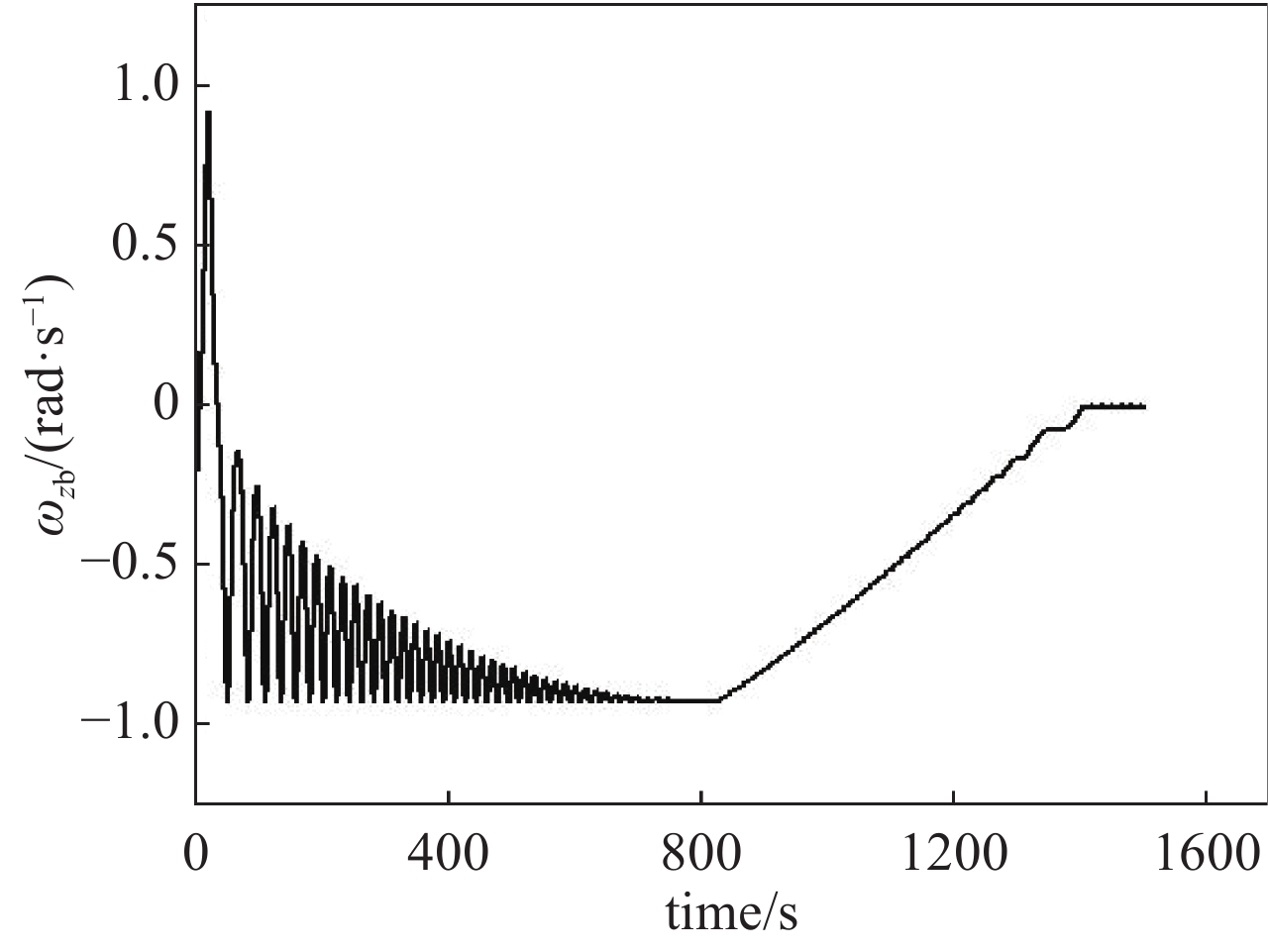Status and progress of pulsed laser ablation propulsion technology in the field of aerospace
-
摘要: 脉冲激光烧蚀推进技术具有比冲高和推力可精确控制的特点,既可用于发射有效载荷也可用于星载动力,甚至可用小行星表面物质作为推进剂使其偏转轨道,因此,在航天领域得到越来越多关注。围绕激光单级入轨发射、同步轨道和火星轨道运输;激光微推力器用于航天器姿轨控,以及激光与电组合推进;激光烧蚀操控cm级空间碎片的轨道,以及激光烧蚀操控较大尺寸碎片的姿态;激光烧蚀偏转小行星轨道等方面,对脉冲激光烧蚀推进技术在航天领域研究现状和进展,进行了系统全面地归纳和总结,并对激光平均功率、波长、脉宽和推进剂选材等关键问题,进行了详细分析。Abstract: Pulsed laser ablation propulsion has the characteristics of high specific impulse and precise and controllable thrust. It can be used not only for launching payload, but also for satellite drive, even for deflecting the orbit of asteroid, whose surface material would be ablated as propellant. Therefore, pulsed laser ablation propulsion has attracted more and more attention in the aerospace field. Focusing on laser launch vehicle of single stage to orbit, transmission to geosynchronous orbit and Mars orbit; laser plasma thrusters for the attitude and orbit control of spacecraft, laser-electric hybrid acceleration systems; laser ablation for orbit manipulation of centimeter scale space debris and attitude manipulation of larger space debris; laser ablation for deflecting the orbit of asteroid, this paper systematically and comprehensively summarizes the research status and progress of pulsed laser ablation propulsion technology in the field of aerospace, and analyzes in detail the key problems such as the average power, wavelength, pulse width of laser and the selection of propellant.
-
表 1 推进剂材料和冲量耦合系数
Table 1. Propellant material and coupling coefficient
pulse width/fs coupling coefficient/(N·MW−1) energy fluence/(kJ·m−2) Al POM Al POM 400 30±5 125±12 50±10 32±6 80 28±5 773±70 30±6 40±8 表 2 激光和靶材参数
Table 2. Laser and target parameters
launch
orbittype wavelength/nm pulse
duration/pspulse
energy/kJpulse repetition
rate/Hzlaser average
power/MWmirror
diameter/mcoupling coefficient/
(N/MW)single stage to orbit Nd:YAG 1057 100 5 1000~3000 5~15 6 100~150 from LEO into Mars orbit Nd:YAG 355 100 5 250 1.25 3 70 -
[1] Kantrowitz A. Propulsion to orbit by ground-based lasers[J]. Astronautics and Aeronautics, 1972, 10(5): 74-76. [2] Pirri A N, Weiss R F. Laser propulsion[C]//AIAA 5th Fluid and Plasma Dynamics Conference. Boston: AIAA, 1972. [3] Phipps C, Birkan M, Bohn W, et al. Review: laser-ablation propulsion[J]. Journal of Propulsion and Power, 2010, 26(4): 609-637. doi: 10.2514/1.43733 [4] 张楠, 徐智君, 朱晓农, 等. 激光推进技术[J]. 红外与激光工程, 2011, 40(6):1025-1037. (Zhang Nan, Xu Zhijun, Zhu Xiaonong, et al. Laser propulsion technology[J]. Infrared and Laser Engineering, 2011, 40(6): 1025-1037 doi: 10.3969/j.issn.1007-2276.2011.06.009 [5] 谭胜, 吴建军, 张宇, 等. 激光支持的空间微推进技术研究进展[J]. 推进技术, 2018, 39(11):2415-2428. (Tan Sheng, Wu Jianjun, Zhang Yu, et al. Research progress of laser-supported space micropropulsion technology[J]. Journal of Propulsion Technology, 2018, 39(11): 2415-2428 [6] 洪延姬, 金星, 李小将, 等. 临近空间飞行器技术[M]. 北京: 国防工业出版社, 2012.Hong Yanji, Jin Xing, Li Xiaojiang, et al. Near space vehicle technology[M]. Beijing: National Defense Industry Press, 2012 [7] 洪延姬, 李倩, 王殿恺, 等. 超声速飞行器的激光空气锥减阻方法[M]. 北京: 科学出版社, 2016.Hong Yanji, Li Qian, Wang Diankai, et al. Laser air cone drag reduction method for supersonic aircraft[M]. Beijing: Science Press, 2016 [8] 洪延姬, 金星, 崔村燕, 等. 先进航天推进技术[M]. 北京: 国防工业出版社, 2012.Hong Yanji, Jin Xing, Cui Cunyan, et al. Advanced space propulsion technology[M]. Beijing: National Defense Industry Press, 2012 [9] 洪延姬, 金星, 李倩, 等. 吸气式脉冲激光推进导论[M]. 北京: 国防工业出版社, 2012.Hong Yanji, Jin Xing, Li Qian, et al. Introduction to inspiratory pulsed laser propulsion[M]. Beijing: National Defense Industry Press, 2012 [10] Myrabo L N, Messitt D G, Mead F B Jr. Ground and flight tests of a laser propelled vehicle[C]//36th AIAA Aerospace Sciences Meeting & Exhibit. Reno, NV: AIAA, 1998. [11] Phipps C, Bonnal C, Masson F, et al. Launching swarms of microsatellites using a 100 kW average power pulsed laser[J]. Journal of the Optical Society of America B, 2018, 35(10): B20-B26. doi: 10.1364/JOSAB.35.000B20 [12] Phipps C R, Bonnal C, Masson F, et al. Transfers from Earth to LEO and LEO to interplanetary space using lasers[J]. Acta Astronautica, 2018, 146: 92-102. doi: 10.1016/j.actaastro.2018.02.018 [13] Phipps C R, Boustie M, Chevalier J M, et al. Laser impulse coupling measurements at 400 fs and 80 ps using the LULI facility at 1057 nm wavelength[J]. Journal of Applied Physics, 2017, 122: 193103. doi: 10.1063/1.4997196 [14] Phipps C R, Reilly J P, Campbell J W. Optimum parameters for laser launching objects into low earth orbit[J]. Laser and Particle Beams, 2000, 18(4): 661-695. doi: 10.1017/S0263034600184101 [15] Phipps C R, Luke J R, Helgeson W, et al. Performance test results for the laser-powered microthruster[J]. AIP Conference Proceedings, 2006, 830(1): 224-234. [16] Phipps C R, Luke J R, Helgeson W, et al. A ns-pulse laser microthruster[J]. AIP Conference Proceedings, 2006, 830(1): 235-246. [17] Horisawa H, Igari A, Kawakami M, et al. Discharge characteristics of laser-electric hybrid thrusters[C]//40th AIAA/ASME/SAE/ASEE Joint Propulsion Conference and Exhibit. 2004. [18] Horisawa H, Kawakami M, Kimura I, et al. Laser-assisted pulsed plasma thruster for space propulsion applications[J]. Applied Physics A, 2005, 81(2): 303-310. doi: 10.1007/s00339-005-3210-8 [19] Ono T, Uchida Y, Horisawa H, et al. Measurement of ion acceleration characteristics of a laser-electrostatic hybrid microthruster for space propulsion applications[J]. Vacuum, 2008, 83(1): 213-216. doi: 10.1016/j.vacuum.2008.03.098 [20] Osamura A, Sakai T, Horisawa H. Development of a laser-electrostatic hybrid acceleration thruster[C]//50th AIAA/ASME/SAE/ASEE Joint Propulsion Conference. Cleveland, OH: AIAA, 2014. [21] Horisawa H, Sasaki Y, Funaki I, et al. Electromagnetic acceleration characteristics for a laser-electric hybrid thruster[C]//44th AIAA/ASME/SAE/ASEE Joint Propulsion Conference & Exhibit. Hartford: AIAA, 2008. [22] Horisawa H, Mashima Y, Yamada O, et al. High ISP mechanism of rectangular laser-electromagnetic hybrid acceleration thruster[C]//32nd International Electric Propulsion Conference. Wiesbaden, 2011. [23] Akashi N, Oigawa Y, Hosokawa H, et al. Plasma acceleration characteristic of a rectangular laser-electromagnetic hybrid thruster[C]//50th AIAA/ASME/SAE/ASEE Joint Propulsion Conference. Cleveland, OH: AIAA, 2014. [24] Phipps C R, Albrecht G, Friedman H, et al. ORION: clearing near-earth space debris using a 20-kW, 530-nm, earth-based, repetitively pulsed laser[J]. Laser and Particle Beams, 1996, 14(1): 1-44. doi: 10.1017/S0263034600009733 [25] Phipps C R, Baker K L, Libby S B, et al. Removing orbital debris with lasers[J]. Advances in Space Research, 2012, 49(9): 1283-1300. doi: 10.1016/j.asr.2012.02.003 [26] Campbell J W. Project ORION: orbital debris removal using ground-based sensors and lasers[R]. Washington: NASA, 1996. [27] Phipps C, Reilly P. ORION: clearing near-earth space debris in two years using a 30 kW repetitively pulsed laser[C]//Proceedings of SPIE 3092, XI International Symposium on Gas Flow and Chemical Lasers and High-Power Laser Conference. 1997: 728-731. [28] Schall W O. Laser radiation for cleaning space debris from lower earth orbit[J]. Journal of Spacecraft and Rocket, 2002, 39(1): 81-91. doi: 10.2514/2.3785 [29] 路勇, 刘晓光, 周宇, 等. 空间翻滚非合作目标消旋技术发展综述[J]. 航空学报, 2018, 39:021302. (Lu Yong, Liu Xiaoguang, Zhou Yu, et al. Review of detumbling technologies for active removal of uncooperative targets[J]. Acta Aeronauticaet Astronautica Sinica, 2018, 39: 021302 [30] Kumar R, Sedwick R J. Despinning orbital debris before docking using laser ablation[J]. Journal of Spacecraft and Rocket, 2015, 52(4): 1129-1134. doi: 10.2514/1.A33183 [31] 洪延姬, 金星, 王广宇, 等. 激光清除空间碎片方法[M]. 北京: 国防工业出版社, 2013.Hong Yanji, Jin Xing, Wang Guangyu, et al. Laser method for removing space debris[M]. Beijing: National Defense Industry Press, 2013 [32] 洪延姬, 金星, 叶继飞, 等. 天基激光烧蚀操控空间碎片方法[M]. 北京: 科学出版社, 2020.Hong Yanji, Jin Xing, Ye Jifei, et al. Space-based laser ablation method for manipulating space debris[M]. Beijing: Science Press, 2016 [33] Vasile M, Gibbings A, Watson I, et al. Improved laser ablation model for asteroid deflection[J]. Acta Astronautica, 2014, 103: 382-394. doi: 10.1016/j.actaastro.2014.01.033 [34] Phipps C. Can lasers play a rôle in planetary defense?[J]. AIP Conference Proceedings, 2010, 1278(1): 502-508. [35] Vasile M, Maddock C A. Design of a formation of solar pumped lasers for asteroid deflection[J]. Advances in Space Research, 2012, 50(7): 891-905. doi: 10.1016/j.asr.2012.06.001 [36] Maddock C, Vasile M, Summerer L. Conceptual design of a multi-mirror system for asteroid deflection[C]//27th International Symposium on Space Technology and Science. 2009: 1-5. [37] Gibbings A, Vasile M, Watson I, et al. Experimental analysis of laser ablated plumes for asteroid deflection and exploitation[J]. Acta Astronautica, 2013, 90(1): 85-97. doi: 10.1016/j.actaastro.2012.07.008 [38] Zhang Qicheng, Walsh K J, Melis C, et al. Orbital simulations for directed energy deflection of near-earth asteroids[J]. Procedia Engineering, 2015, 103: 671-678. doi: 10.1016/j.proeng.2015.04.087 [39] Thiry N, Vasile M. Recent advances in laser ablation modelling for asteroid deflection methods[C]//Proceedings of SPIE 9226, Nanophotonics and Macrophotonics for Space Environments VIII. 2014: 922608. [40] Vasile M, Nicolas T. LightTouch3: a demo mission to test laser ablation for asteroid manipulation and exploitation[C]//15th Reinventing Space Conference. Glasgow, UK, 2017. [41] Sloane J B, Sedwick R J. Direct force measurement of pulsed laser ablation of asteroid simulants[J]. Journal of Propulsion and Power, 2020, 36(4): 551-559. doi: 10.2514/1.B37566 -





 下载:
下载:
